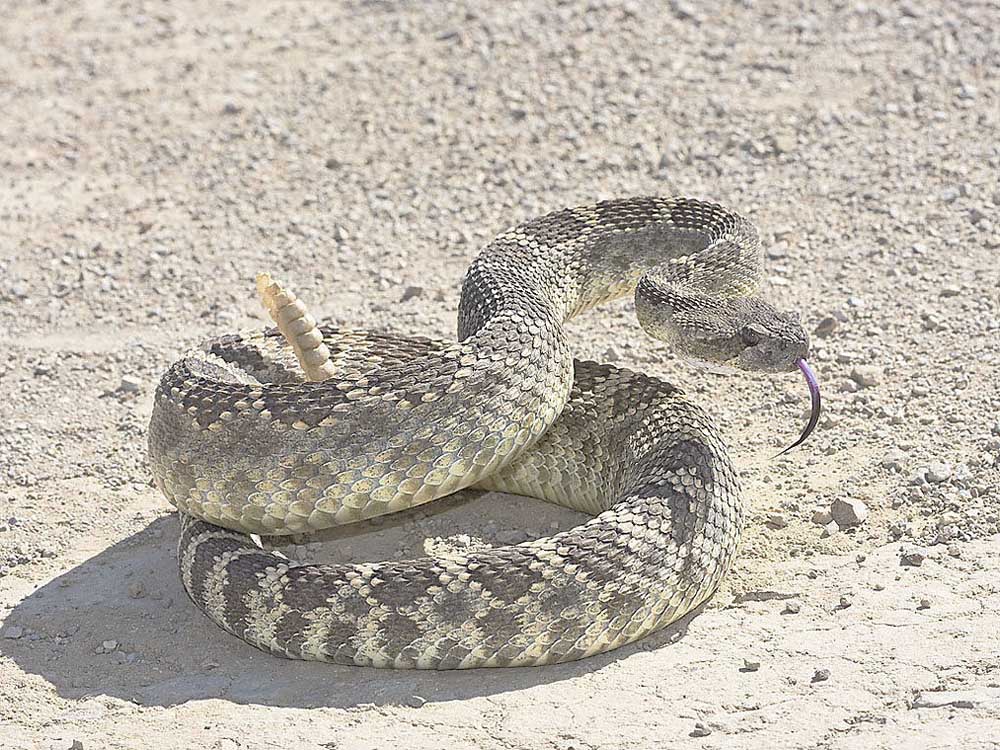Be wary of rattlesnake encounters, WSU says
Published 3:18 am Monday, June 12, 2017

- A Western rattlesnake (Crotalus oreganus) is seen in this file photo. This rattlesnake is common in much of Eastern Washington, according to WSU. They may be more prevalent this year so awareness and avoidence are recommended.
Watch your step.
That’s the advice university researchers are offering to farmers and ranchers this year as rattlesnakes become more active in Eastern Washington.
Washington State University Veterinary Teaching Hospital recently treated a dog and a horse that had been bitten by rattlesnakes. According to the university, anecdotal reports indicate “there seems to be a lot of snakes out this year, perhaps more than in most years.”
Charlie Powell, spokesman for the College of Veterinary Medicine, told the Capital Press a late spring may have allowed rattlesnakes to leave their den later, making for a higher concentration of snakes around areas where they might have otherwise already dispersed.
Such conditions shorten the overall season in which snakes can feed and breed before the fall and winter return, Powell said in a WSU news report. In warm weather, snakes are likely to be more active.
The Western rattlesnake is common to much of Eastern Washington, according to WSU. They are usually spotted near dens, which are generally in rock crevices exposed to sunshine. They most often are seen at night and dusk during the spring and fall when moving to and from hibernation sites.
No long-term study of rattlesnake populations exists, so predicting population sizes is not feasible, said Kenneth Kardong, professor emeritus in at WSU’s School of Biological Sciences, studying reptiles.
He recommends farmers be careful and watch their step.
Powell says the best thing to do for any average person, including farmers or ranchers, is to leave the rattlesnake alone. Rattlesnakes help control rodents and small vermin that can create problems in fields, Powell said.
Most farmers’ fields are intensively worked, Powell said.
“In order to have venomous reptiles around, you’ve got to have small mammals around for them to eat,” he said. “But in the middle of a plowed field, it’s unlikely to run into those types of things.”
However, rattlesnakes can bite livestock on rangeland. Most ranchers aren’t even aware when it happens, Powell said, because the bite area will swell and be uncomfortable for two to three days, but then the symptoms will disappear.
“This is not like the situation with Eastern large diamondback rattlesnakes that are much more venomous or snakes that have different types of venom,” Powell said. “Our Western rattlesnakes (cause) relatively less harm than other types of rattlesnakes.”
Kardong recommends keeping an eye on the bitten animal.
“Most farm animals — pigs, cattle — can ride out a bite,” he said. “If not, get it to the vet. Horses are a special situation as they cannot breathe through their mouths. Hence, if bitten in the snout and it swells up, get the vet.”
Half of all rattlesnake bites on large animals or people are “dry” bites, “meaning the snake is not wasting its venom on you,” Powell said.
“It’s basically telling you, ‘Leave me alone,’” he said. “You’re too big for that snake to eat, and it takes time and energy to produce that venom, so why waste something that’s essential for you to eat on something that’s too big for you to eat?”
If a farmer or companion animal is bitten, Powell advises immediate medical care.
“With human beings, don’t do any of the old cut-and-suck types of things, don’t apply ice to the wound,” he said. “Simply elevate the wound above your heart if you can, get yourself to a hospital and let them help you determine how to best treat that wound.”
“Don’t screw around by trying to treat in the field,” Kardong echoed. “(It is) usually useless and wastes valuable time.”







